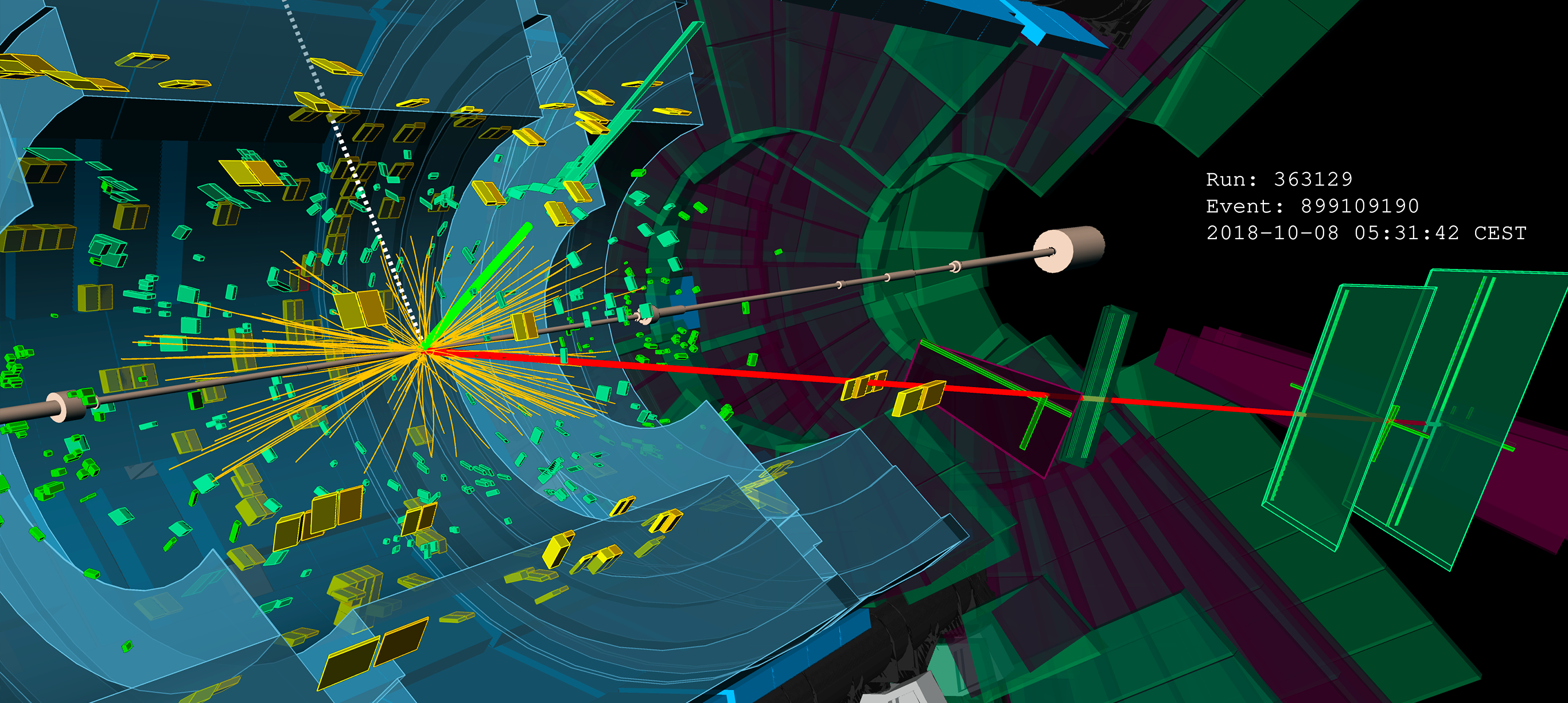New ATLAS result marks milestone in the test of Standard Model properties
3 August 2020 | By

The ATLAS Collaboration has released a new study into a key building block of matter: leptons. This type of particle comes in three different families (flavours) and, according to the Standard Model, should follow strict rules. For instance, except for their mass, leptons of different flavours have identical properties – a feature known as lepton flavour universality. This was recently corroborated by a key measurement of the W-boson decay rates into leptons by the ATLAS Collaboration.
Yet the Standard Model has known shortcomings. For example, it predicted that leptons could only interact with other leptons of the same flavour. Experiments observed neutrinos (neutral leptons) violate this hypothesis, transforming from one flavour into another in processes known as neutrino oscillation. This led physicists to realise that neutrinos were not, in fact, massless, as originally assumed in the Standard Model. Such discoveries show that the fundamental structure of Nature is more complex than one had thought.
Could the violation of lepton flavour seen in neutral leptons also occur among charged leptons (with dramatic consequences)? In a new result, the ATLAS Collaboration searched for lepton-flavour-violating decays of the Z boson, where the Z boson decays into two charged leptons of different flavours. Such events are predicted from neutrino oscillation to be so rare – accounting for just one in 1054 Z-boson decays – that they should be undetectable. If they were to be observed at ATLAS, it would be an unequivocal sign of new physics beyond the Standard Model.
This new ATLAS result is an important step forward from the legacy of LEP experiments. Such searches for highly suppressed processes can reveal hints for new particles or interactions.
Physicists examined ATLAS data collected over two runs of the Large Hadron Collider (LHC, 2012–2018) to set strong constraints on lepton-flavour-violating decays involving a tau lepton (τ) and an electron (e) or a muon (μ). While there have been several low-energy experiments that specialise in lepton-flavour-violating searches, they cannot easily probe transitions involving Z bosons. This is an area where high-energy accelerators, such as CERN’s previous Large Electron Positron (LEP) collider (1989–2000) and now the LHC, play a special role.

The ATLAS result marks a new milestone in a legacy of precision measurements established by LEP. Searching for rare Z-boson decays is a great challenge for LHC experiments. Whereas LEP produced an abundance of Z bosons in a relatively clean environment, only a small fraction of LHC collisions produce a Z boson – and always along with several background collisions. However, the LHC has one major advantage: it can produce Z bosons at a much faster rate! More than 20 years on, ATLAS’ result now supersedes those of the LEP experiments (OPAL, DELPHI).
To analyse the enormous LHC Run 2 dataset – with its 8 billion Z bosons – ATLAS physicists developed a state-of-the-art machine-learning method using deep neural networks. The neural networks were trained to identify the kinematic properties of the signal process, where a Z boson decays into an electron or a muon and a tau lepton, which itself is unstable and decays (Figure 1). They also had to differentiate the signal process from mainly two others that produce the same particles: the lepton-flavour-conserving Z-boson decay into a pair of tau leptons, where one tau lepton decays into an electron or a muon (plus undetected neutrinos), and the W-boson decay into leptons, produced together with an additional jet of particles.
The output distributions of the neural networks for the selected candidate event were studied to determine the presence of lepton-flavour-violating Z-boson decays (Figure 2 for the tau lepton and muon case). The classification power of the neural networks – combined with the unprecedented number of Z-boson decays studied – allowed ATLAS to set constraints on the maximum rate at which lepton-flavour-violating Z-boson decays involving a tau lepton can occur. The result excludes, at 95% confidence level, Z-boson decay rates greater than 8.1x10-6 (Z→τe) and 9.5x10-6 (Z→τμ).
The new ATLAS result provides experimental guidance towards new theories that could explain the shortcomings of the Standard Model. The precision of the result is largely limited by the number of analysed Z-boson decays. Therefore, ATLAS is looking forward to improved sensitivity that is to be expected from the additional data of future LHC runs.
Links
- Lepton Flavour Violation at the LHC: a search for Z→eτ and Z→μτ decays with the ATLAS detector (ATLAS-CONF-2020-035)
- ICHEP2020 presentation by Karl Jakobs: ATLAS Highlights
- OPAL Collaboration, A search for lepton flavor violating Z0 decays, Z. Phys. C67 (1995) 555
- DELPHI Collaboration, Search for lepton flavor number violating Z0 decays, Z. Phys. C73 (1997) 243
- New ATLAS result addresses long-standing tension in the Standard Model, Physics Briefing, 28 May 2020
- See also the full lists of ATLAS Conference Notes and ATLAS Physics Papers.



